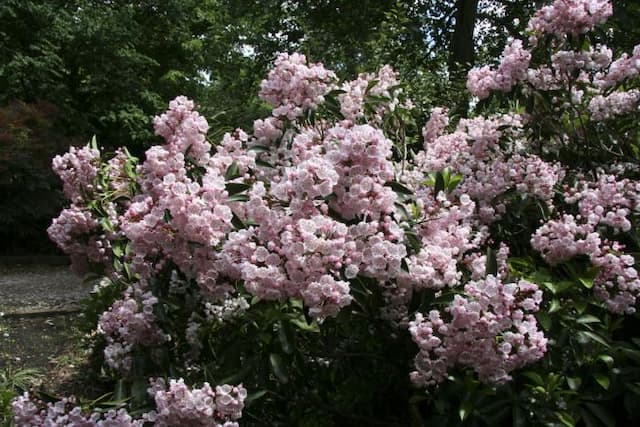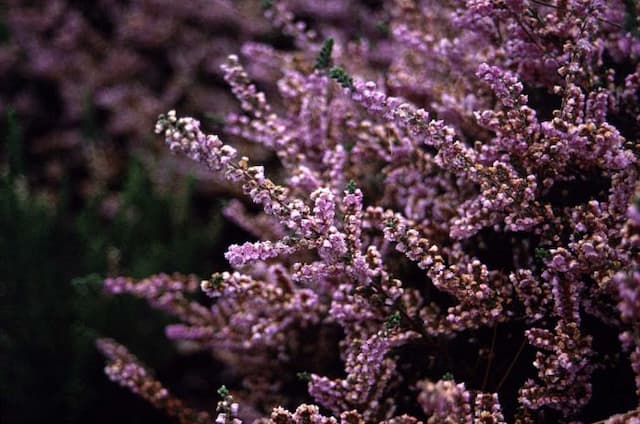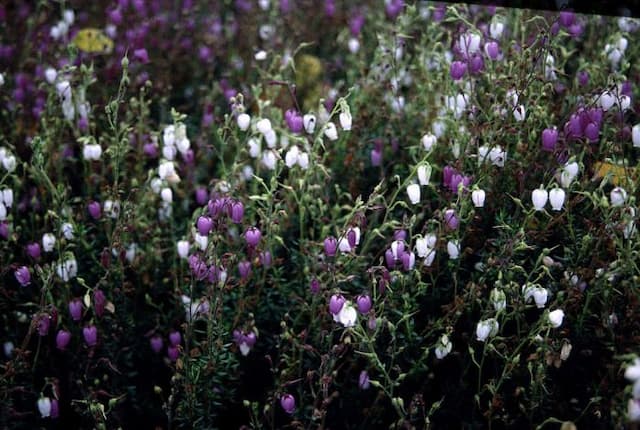Strawberry tree Arbutus unedo

ABOUT
A spreading, evergreen, shrubby tree, with rough shredding red-brown bark and mid-green leathery leaves. Flowers are urn-shaped and white, sometimes pink tinged, appearing in panicles to 5cm long as the strawberry-like red fruits, from the previous years flowers, ripen
About this plant
 Names
NamesFamily
Ericaceae.
Synonyms
Strawberry Tree, Irish Strawberry Tree, Killarney Strawberry Tree, Cane Apple.
Common names
Arbutus crispata, Arbutus intermedia, Arbutus laurifolia, Arbutus microphylla, Arbutus vulgaris, Arbutus cassinifolia, Arbutus cassinifolia, Arbutus procumbens, Arbutus salicifolia, Cistus albidus, Cistus crispatus, Cistus ericoides, Cistus hibernicus, Cistus hyemalis, Cistus salicifolius, Cistus unedo, Dracodendron unedo, Mespilus unedo
 Characteristics
CharacteristicsLife cycle
Perennials
Foliage type
Evergreen
Color of leaves
Green
Flower color
White
Height
10 feet (3 meters)
Spread
10 feet (3 meters)
Plant type
Tree
Hardiness zones
7
Native area
Mediterranean
Benefits
 General Benefits
General Benefits- Ornamental Value: The Strawberry Tree is admired for its evergreen foliage, bell-shaped flowers, and red strawberry-like fruits, adding aesthetic appeal to gardens and landscapes.
- Wildlife Habitat: It provides food and shelter for birds, bees, and other wildlife, supporting biodiversity.
- Drought Tolerance: Once established, the Strawberry Tree is quite drought-resistant, making it suitable for xeriscaping and low-water gardens.
- Erosion Control: With its extensive root system, it can help stabilize slopes and prevent soil erosion.
- Edible Fruit: The fruits of the Strawberry Tree are edible and can be used in jams, jellies, and beverages, offering a source of homegrown produce.
- Year-Round Interest: Its year-long foliage, white flowers in fall, and fruits that mature in the following year provide continuous visual interest throughout the seasons.
- Cultural Significance: In some regions, the Strawberry Tree is of historical and cultural importance and is used in various traditional practices and festivals.
- Low Maintenance: It generally requires minimal care once established, making it a suitable choice for gardeners seeking low-maintenance plants.
- Adaptability: Arbutus unedo can adapt to a range of soil types, though it prefers well-drained soils, highlighting its versatility in different garden conditions.
- Pollinator-Friendly: The flowers produce nectar, attracting pollinators like bees, contributing to the pollination of nearby plants.
 Medical Properties
Medical Properties- Antioxidant effects: The fruit of Arbutus unedo contains antioxidants, which can help in neutralizing harmful free radicals in the body.
- Anti-inflammatory properties: Extracts from the plant have been studied for their potential anti-inflammatory effects which may be beneficial in reducing inflammation.
- Antimicrobial activity: Arbutus unedo has been traditionally used for its antimicrobial properties, which can help in fighting certain bacteria and fungi.
- Astringent properties: The astringent qualities of the plant have been used to treat gastrointestinal issues such as diarrhea and dysentery.
- Diuretic effect: The leaves and fruits are believed to have diuretic properties, which can assist in the removal of excess fluids from the body.
 Air-purifying Qualities
Air-purifying QualitiesThis plant is not specifically known for air purifying qualities.
 Other Uses
Other Uses- Woodworking: The wood of the Arbutus unedo, also known as the strawberry tree, is valued for its rich color and fine grain, making it suitable for crafting furniture, decorative objects, and veneers.
- Landscape Design: As an evergreen with attractive flowers and edible fruit, strawberry trees are commonly used in ornamental gardens and landscape design for aesthetic appeal.
- Bonsai Creation: The strawberry tree can be trained into bonsai form, appreciated for its gnarled trunk and evergreen foliage.
- Fruit Pectin Source: The high pectin content in the fruits of the strawberry tree can be used for setting jams and jellies.
- Wildlife Habitat: The dense foliage provides shelter for birds and the fruit is a food source for various bird species, contributing to biodiversity in gardens and wild areas.
- Nectar Source: The flowers produce abundant nectar, which is attractive to bees and other pollinating insects, supporting local pollinator populations.
- Windbreaks and Privacy Screens: These trees, with their dense foliage, can be planted in rows to act as windbreaks or natural privacy screens in landscaping projects.
- Dye Production: The tree's bark and leaves contain tannins that can be used in the production of dyes for textiles.
- Charcoal Production: The dense wood of the strawberry tree is suitable for making high-quality charcoal, which can be used for drawing and as a fuel.
- Tannin Extraction: The bark of the strawberry tree contains tannins, which can be extracted and used for tanning leather.
Interesting Facts
 Feng Shui
Feng ShuiThe Strawberry Tree is not used in Feng Shui practice.
 Zodiac Sign Compitability
Zodiac Sign CompitabilityThe Strawberry Tree is not used in astrology practice.
 Plant Symbolism
Plant Symbolism- Temperance: The Arbutus unedo, also known as Strawberry Tree, bears fruit and flowers simultaneously, symbolizing moderation and the balance between the past (fruit) and the future (flowers).
- Survival: As a hardy plant that can grow in challenging conditions, the Strawberry Tree represents the ability to endure and adapt to life's hardships.
- Longevity: With its potential for a lengthy lifespan, the Strawberry Tree is often associated with long life and good health.
- Rarity: As the tree is not as commonly found as others, it can symbolize uniqueness or rarity, much like its uncommon fruit.
- Protection: In some cultures, the evergreen nature of Strawberry Tree suggests protection and the idea of offering shelter.
 Water
WaterThe Strawberry Tree (Arbutus unedo) prefers a consistent watering schedule where the soil is kept moist but not waterlogged. Generally, providing about 1 gallon of water per week is sufficient for an established plant, but this may vary depending on climatic conditions and soil type. During the hot, dry months, it may require more frequent watering, whereas in cooler, wetter climates, it may need less. It's important to water the plant at its base, avoiding getting water on the leaves to prevent fungal diseases. Check the top inch of the soil for dryness as a guide for when to water again.
 Light
LightThe Strawberry Tree thrives in full sun to partial shade conditions. It is best suited to a location where it can receive at least six hours of direct sunlight each day, although it will tolerate some light shade, especially in hotter climates. Too much shade may reduce fruiting and flowering, so aim for a spot that provides a good balance of sunlight throughout the day.
 Temperature
TemperatureThe Strawberry Tree is quite adaptable to a range of temperature conditions and can survive minimum temperatures down to about 20 degrees Fahrenheit. It flourishes in an ideal temperature range between 50 to 80 degrees Fahrenheit. Though it can handle occasional cold snaps and frost, prolonged exposure to temperatures below 20 degrees Fahrenheit may damage the plant.
 Pruning
PruningPruning the Strawberry Tree is primarily for shaping and removing damaged or diseased branches. It should be pruned in the late winter or early spring before new growth starts. Light pruning can be done to maintain a desired shape, but heavy pruning should be avoided as this can lead to a reduction in flowering and fruiting. Always use clean, sharp tools to make precise cuts.
 Cleaning
CleaningAs needed
 Soil
SoilThe Strawberry Tree (Arbutus unedo) thrives in well-draining soil with a pH ranging from 5.5 to 7.5. A mix of loam, sand, and peat is often recommended to ensure adequate drainage and aeration. Regular addition of organic matter can also benefit this plant's growth.
 Repotting
RepottingStrawberry Trees (Arbutus unedo) are slow-growing plants and thus do not need frequent repotting. It is usually sufficient to repot these trees every 2 to 3 years to refresh the soil and allow for root expansion.
 Humidity & Misting
Humidity & MistingStrawberry Tree (Arbutus unedo) prefers moderate to high humidity levels but is quite adaptable and can tolerate lower humidity conditions, making it compatible with many climates.
 Suitable locations
Suitable locationsIndoor
Provide bright indirect light and well-draining soil mix.
Outdoor
Plant in well-drained soil, full sun to partial shade.
Hardiness zone
7-10 USDA
 Life cycle
Life cycleThe life cycle of Arbutus unedo, commonly known as the strawberry tree, begins with seed germination, which requires a period of cold stratification to break dormancy. Following germination, the seedling grows through a juvenile phase characterized by rapid vegetative growth and development of the root system. As the plant matures, it enters the vegetative adult phase, where it develops its characteristic glossy green leaves and begins to form a woody trunk and branches. The strawberry tree reaches reproductive maturity after several years, at which point it produces hermaphroditic flowers that are pollinated by bees, giving rise to small red fruits resembling strawberries. These fruits contain seeds that, once dispersed, can initiate a new cycle of life for the species. Throughout its life, Arbutus unedo will undergo periodic vegetative and reproductive cycles, with flowering and fruiting typically occurring in the fall and winter.
 Propogation
PropogationPropogation time
Early spring
The Arbutus unedo, commonly known as the Strawberry Tree, can be propagated by seeds, cuttings, or layering, but the most popular method is by seed. Propagation time for the seeds typically begins in the fall, after the fruits have ripened. To propagate by seed, the fresh berries should be collected and the seeds extracted, cleaned, and sown in a well-draining soil mix. Pre-treatment of the seeds by stratification, which involves storing them in a bag with moist sand at a temperature of 41°F (5°C) for about 60 to 90 days, can improve germination rates. After stratification, the seeds are sown in containers or a nursery bed where they are covered with a thin layer of soil and kept consistently moist until germination occurs. Seed sown Strawberry Trees can take several years to bear fruit and the resulting plants may vary from the parent due to genetic diversity.









